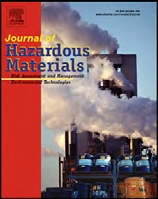Important Progress of Mangrove Pollution Ecology in South China Sea Institute of Oceanology
Mangrove ecosystems, is one of the three high productivity marine ecosystems, and is also an important barrier for ecology protection in the intertidal wetlands of the tropics and subtropics. Mangrove ecology research in the world has a long history, and it mainly includes mangrove species,material and energy flow, environmental pollution and ecology, ecological driving factors, the protection, restoration, development and management.
Recently, the team, which is led by Professor You-Shao Wang, published papers in world-famous Journals about mangrove pollution ecology: “Physiological and biochemical responses in the leaves of two mangrove plant seedlings (Kandelia candel and Bruguiera gymnorrhiza) exposed to multiple heavy metals” in Journal of Hazardous Materials, “Expression and characterization analysis of type 2 metallothionein from grey mangrove species (Avicennia marina) in response to metal stress” in Aquatic Toxicology and “The effect of multiple heavy metals on ascorbate, glutathione and related enzymes in two mangrove plant seedlings (Kandelia candel and Bruguiera gymnorrhiza)” in Oceanological and Hydrobiological Studies. The group first proposed radar relationship diagram between mangrove physiology and biochemical parameters, and confirmed that proline, glutathione and phytochelatins in K. candel had more remarkable in resistance to heavy metal toxicity than Bruguiera gymnorrhiza. For the first time the study revealed the marina II metallothionein gene expression had certain response to environment. Combined with pre-study, they once again confirmed that the mangroves purification on heavy metal was related to gene expression regulation of their type II metallothionein.
In addition, they have first revealed the molecular mechanism of mangroves purification on pollutants and solved the long-term confusion about the role of mangrove purification in macro-ecology. “Expression analysis of type 2 metallothionein gene in mangrove species (Bruguiera gymnorrhiza) under heavy metal stress” was published in the famous journal "Chemosphere" in 2009. The group has also published metallothionein gene and its coding sequence of K.candel and Bruguiera gymnorrhizat in the NCBI GenBank for the first time. “Effect of heavy metal stress on antioxidative enzymes and lipid peroxidation in leaves and roots of two mangrove plant seedlings (Kandelia candel and Bruguiera gymnorrhiza)” published in Chemosphereof 2007, has been cited 37 times by international researchers. These also reflect that their research about mangrove pollution ecology has received world-wide recognition and attention.
